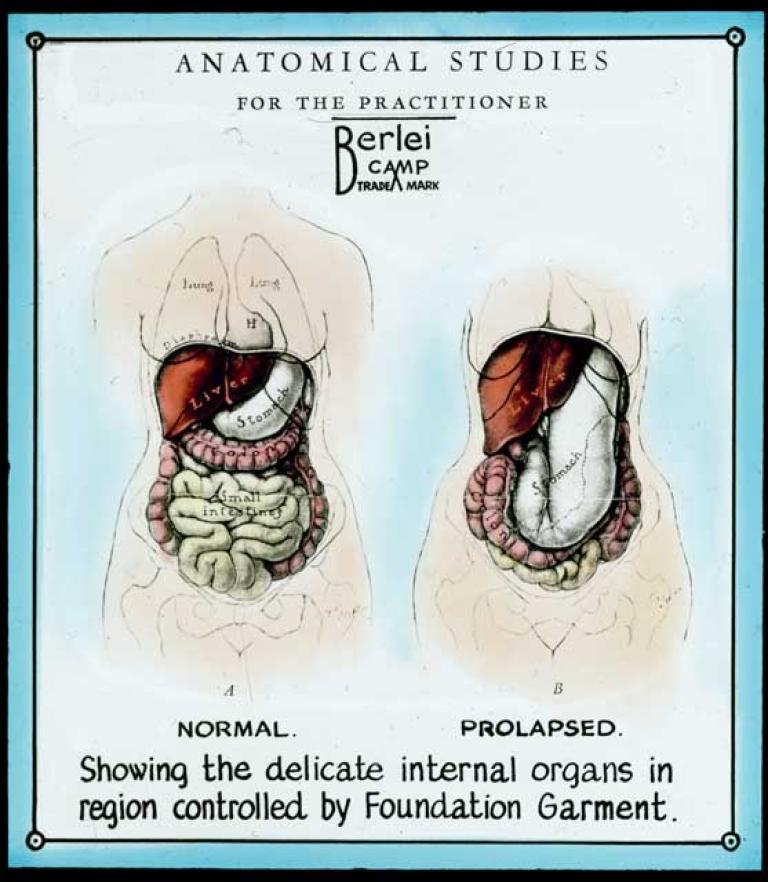
Delicate internal organs
Medical images like this one offer an explanation of the benefits of wearing corsets. This one shows 'the delicate internal organs in region controlled by Foundation Garment' such as those made by Berlei.
In the 1920s and 30s it was the fashion for young women to go corset-less. Berlei opposed this trend on medical, moral and fashion grounds. In this case women were warned that not wearing corsets could result in prolapsed organs. Something that we know now to be untrue. This glass slide is an example of how women's bodies were (and to some extent still are) a matter of public concern and consternation. Women required an external 'foundation' to hold them together. Not only were women's bodies delicate, but also their internal organs and minds. This glass slide is a fascinating window onto the social mores of 1930s Australia.
This glass slide, produced by the Linton Bros of 61 Market St Sydney, was used as part of the educational material presented to would-be Berlei fitters.
Notes by Beth Taylor
The National Film and Sound Archive of Australia acknowledges Australia’s Aboriginal and Torres Strait Islander peoples as the Traditional Custodians of the land on which we work and live and gives respect to their Elders both past and present.



